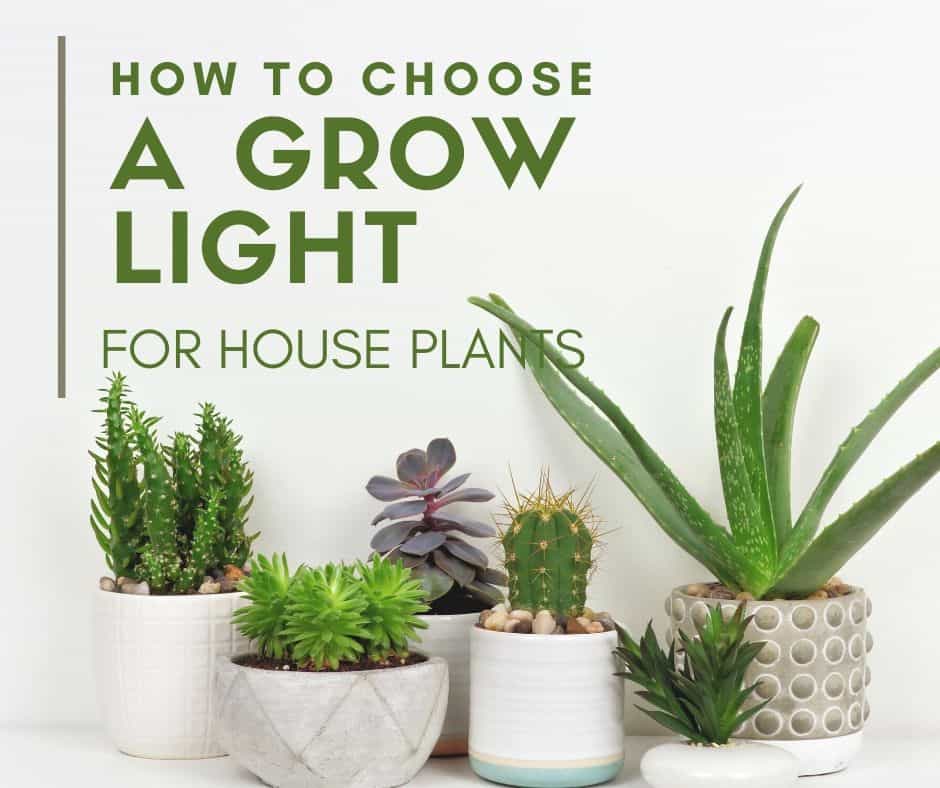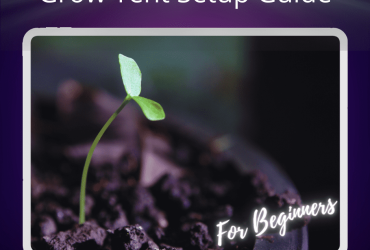How to Choose a Grow Light for House Plants
Just because a plant is typically grown inside, that doesn’t mean the indoor environment is ideal for its needs. House plants also need the right amount of light, as well as the right kind. Unless your home has an optimal spot for a particular species of plant, finding a grow light for house plants might be a necessity. Otherwise, your plant will fail to thrive.
But choosing the best grow lights for house plants can be a challenge. After all, each option brings something different to the table, and there are tons of options to choose from. Maybe a Phlizon grow light will meet your needs? Perhaps a Viavolt is a better fit or a Cree?
There is also a variety of technologies. Simply deciding between LED, LEC, fluorescent and other types of artificial lights for plants can be surprisingly tricky.
Luckily, there are things you can do to figure out which grow lamps for house plants meets your needs. Here’s how to get started.
Find a Full-Spectrum Grow Light for House Plants
Plants need the right mix of light if they are going to flourish. Blue light helps your house plant’s foliage grow. Red light assists with flowering and fruiting. Without some of both, your plant may not be at its best.
Fortunately, it’s also a pretty easy situation to handle. Just make sure that you focus your house plant grow light search on options that provide full-spectrum light. That way, your plant will get both blue and red light from one system, covering all of your bases.
Choose a Bulb Type That’s Right for You
Many avid indoor gardeners know that there are a surprising number of grow light bulb types available. However, if you’re new to the game, it’s easy to become overwhelmed by the sheer number of options.
What’s important to keep in mind when choosing grow lights for house plants is that each kind of artificial light brings along a unique set of pros and cons. By knowing what the benefits and drawbacks are, you can choose a bulb that’s right for you and your plant.
Here’s a look at some of the most commonly available options:
Fluorescent Grow Lights
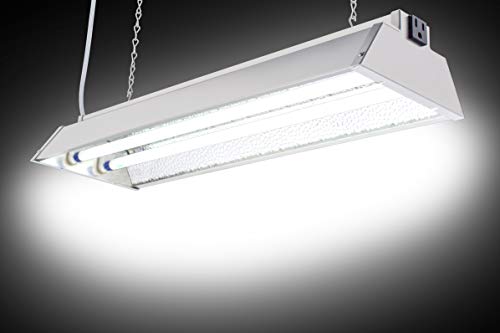
One of the simplest and least expensive grow lights for house plants options is fluorescent bulbs, particularly compact fluorescent (CFL) bulbs. They are readily available, can often be screwed into regular lamp sockets, and don’t get overly hot.
However, most aren’t full-spectrum, and most versions are higher in the blue spectrum. You can find full spectrum options, but you may have to hunt around a bit for them. Otherwise, you’ll want to mix warm and cool versions of the bulbs or use cool-colored CFL bulbs with incandescent ones for balance.
Incandescent Grow Lights
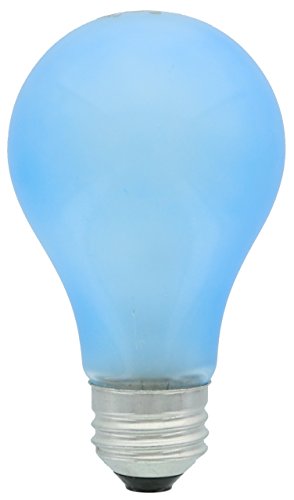
Incandescent bulbs lean toward the red side of the spectrum. That makes them a great supplement to CFLs. Plus, you can find options that fit into traditional lamp fixtures, which is convenient.
Unfortunately, incandescent bulbs can get incredibly hot. You can’t place them too close to your house plants, or they will burn. Additionally, they aren’t as readily available as some other kinds of bulbs, like LEDs or CFLs.
LED Grow Lights
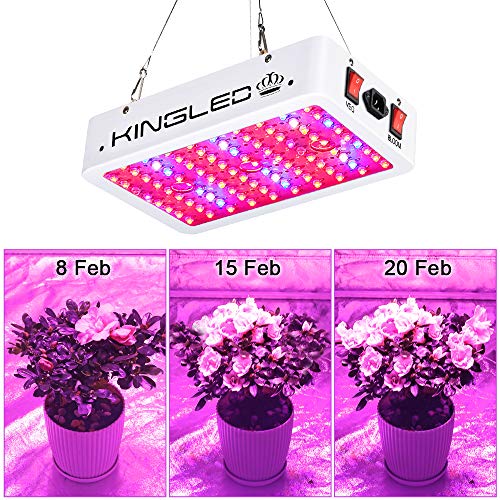
If you are looking for an energy-efficient, low heat option, LED grow lights are hard to beat. Since every diode in a system can be a different color, many of these options feature full-spectrum light. In some fixtures, you can even control the mix to optimize the light for your house plants, or vegetables like tomatoes, giving you a chance to adjust the lighting to facilitate the bloom cycle or regular growth periods.
LED grow lights are also readily available, being one of the more popular bulb options. They can range in affordability, as some of the fixtures are budget-friendly while others are significant financial commitments.
LEC Grow Lights
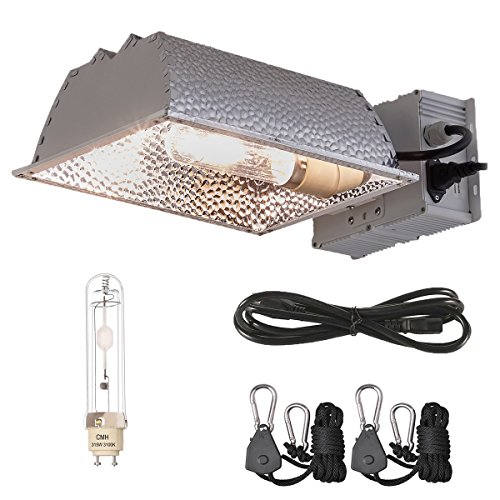
Not to be confused with LED technology, light-emitting ceramic (LEC) lights are designed to mimic natural sunlight better than older high-density discharge (HID) bulbs. Plus, they don’t use as much energy as a traditional light bulb, making them more affordable to operate. They have decent lifespans, potentially lasting up to two years or slightly more.
The biggest drawback of LECs is that they produce quite a bit of heat. If you don’t have a cooling system, it could overheat your house plants (and your room). It’s also important to note that LEC is technically a brand-specific product. Ceramic metal halide (CMH) and Ceramic discharge metal halide (CDM) bulbs are essentially the same things; they are just made by different manufacturers.
Halogen Grow Lights
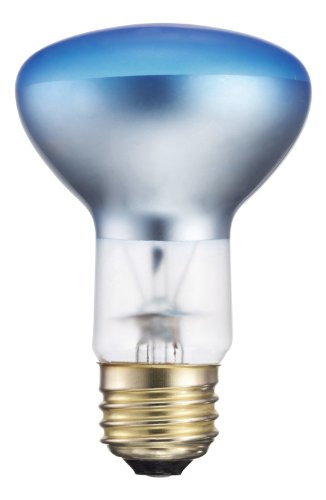
With halogen bulbs, you can get full-spectrum light. However, they generally don’t come out ahead of other options. They aren’t as energy efficient as CFLs, for example. Additionally, they run hotter than virtually everything but incandescent bulbs, which isn’t ideal.
Select an Appropriate House Plant Grow Light Fixture or Shelving
While you want your house plants to thrive, you often have to approach the light fixture part of the equation differently than with an indoor garden. After all, house plants are commonly a component of a room’s décor, so you might not want a bulky grow light system in that space.
Luckily, you do have options. If you use bulbs that fit in traditional sockets, you could use a standing lamp with either moveable parts of a gooseneck design. That allows you to aim the light toward your plant without ruining your space’s aesthetics.
If you do buy an articial light that comes with its own fixture, consider the look before you make a purchase. For example, LED grow lights come in a variety of fixture designs and colors. You might be able to find one that blends with your décor or that is small enough to conceal while still providing enough light.
Alternatively, consider a shelf or other furniture. For my house plants, I use an adjustable shelf (from Wayfair) and hanging kits for my lights that allows me to position my artificial lights a suitable distance above the plants depending on their growth stage (and the intensity of the light).
Whatever you decide, just keep in mind, you don’t want to encase an LED grow light system, as that could trap the heat, drying out your precious plants and increasing the risk of a fire.
Enjoyed this post? Pin it!
